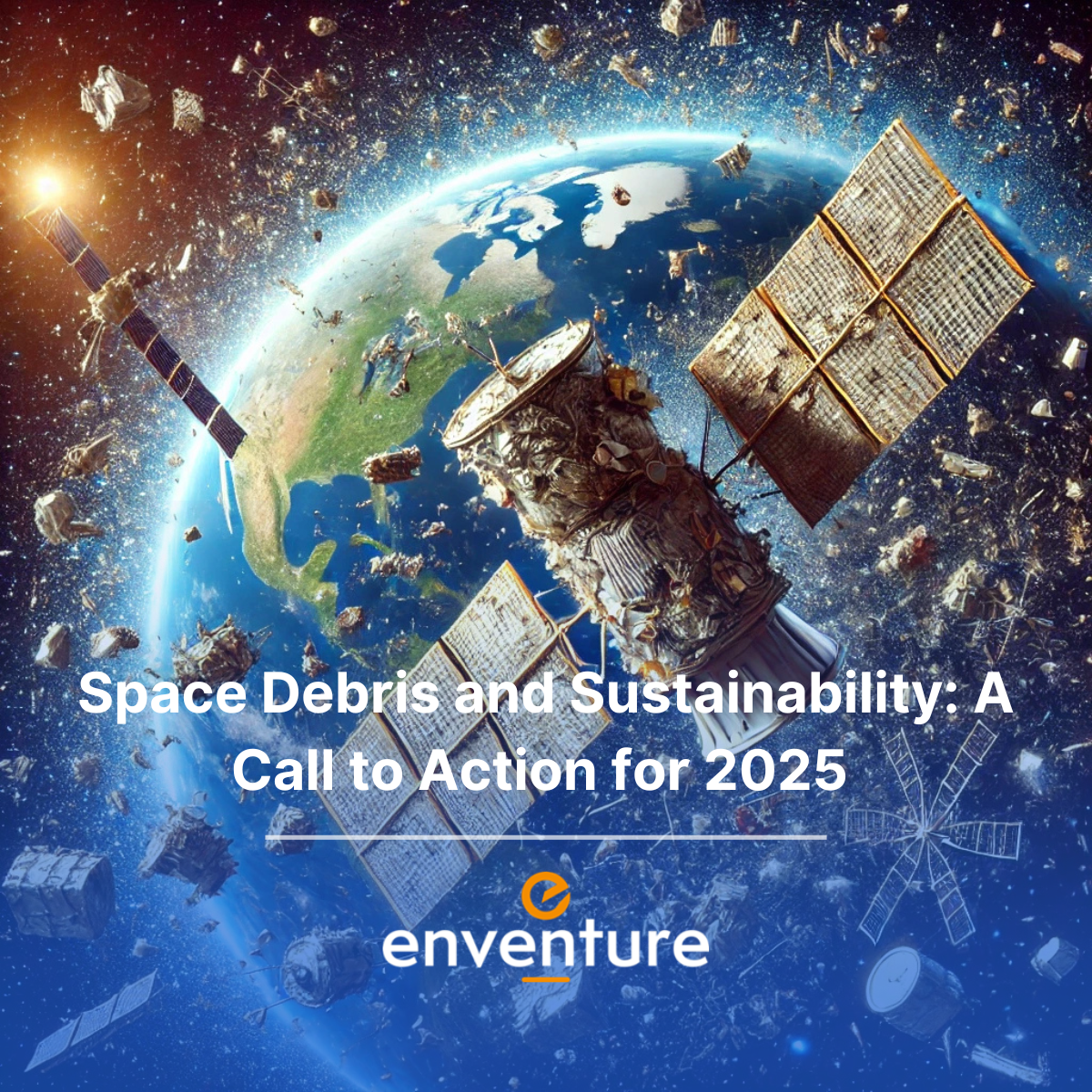The space industry is tackling the challenge of space debris with innovation, regulations, and collaboration, ensuring a sustainable future in orbit.

By: Jessica Maldonado
The space industry is growing at an incredible pace, offering new ways to innovate and improve life on Earth. But this rapid growth also brings challenges—one of the biggest being space debris. As more satellites are launched into orbit, the risk of collisions and long-term damage to our orbital environment keeps rising. It’s clear that we need to make sustainability a priority.
The numbers show just how serious the problem is. Right now, there are over 130 million pieces of debris in orbit according to, but only around 35,000 are big enough to track. By 2030, the number of satellites is expected to triple to 30,000, with about 28,000 launches happening over the next decade. Most of these will be in Low Earth Orbit (LEO), making it more crowded and dangerous than ever.
This isn’t just a technical issue—it’s also a big economic one. The market for monitoring and cleaning up space debris is growing fast. It’s expected to go from $1.21 billion in 2024 to $1.32 billion in 2025, with steady growth hitting $1.75 billion by 2029. These numbers show how important managing debris is for the future of space.
People in the industry know how serious this is. A survey by Space-Comm Expo found that 68% of industry leaders see space sustainability and debris management as the most important issue for 2025. On top of that, 65% believe AI and data analytics will be key tools to help, while 45% pointed to satellite internet and connectivity as another area to watch.
Thankfully, some big steps are being taken to deal with this. The European Space Agency (ESA) has set an ambitious goal with its "Zero Debris Approach," aiming to stop the creation of debris in Earth and lunar orbits by 2030. ESA also updated its Space Debris Mitigation Guidelines, which will come into effect in November 2023. They’ve even signed a $106 million contract with ClearSpace SA to remove a piece of defunct debris. On the commercial side, the demand for space monitoring is expected to generate $2.5 billion in revenue over the next ten years, showing how serious companies are about tackling this issue.
Technology is playing a big role, too. Missions like ESA’s ClearSpace-1 are testing ways to remove debris, while satellite makers are building new designs with systems that help them deorbit once they’re no longer useful. Some companies are also looking into Very Low Earth Orbits (VLEO), where natural atmospheric drag helps clean up debris.
Regulation is starting to catch up as well. The FCC in the United States has proposed a rule requiring satellites to be disposed of within five years of the end of their mission. But international rules still need a lot of work to make sure everyone follows the same standards.
With the global space industry set to hit a $1 trillion valuation by 2030, making space sustainable is more important than ever. Managing space debris isn’t just about safety—it’s about ensuring the future of space exploration and the benefits it brings to all of us.
At Enventure, we’re committed to finding solutions to these challenges. By focusing on sustainability, we can protect space, help the industry grow responsibly, and make sure the benefits of space exploration last for generations to come.
The time to act is now. Together, we can make space a cleaner, safer place and ensure it remains a resource for the future. At Enventure, this is at the core of what we do. We are committed to driving innovation and collaboration to solve the challenges of space sustainability.
Bold Moves,
Brighter Futures
Let's team up and make a difference.
Subscribe to our newsletter
Enventure is an exit-driven fund with high-yield opportunities in the healthcare, space, and green tech sectors across the US and India.
Mail Us
3103 Kewanee Ln,
Naperville, IL, 60564
Copyright © 2025 Enventure, all rights reserved.
